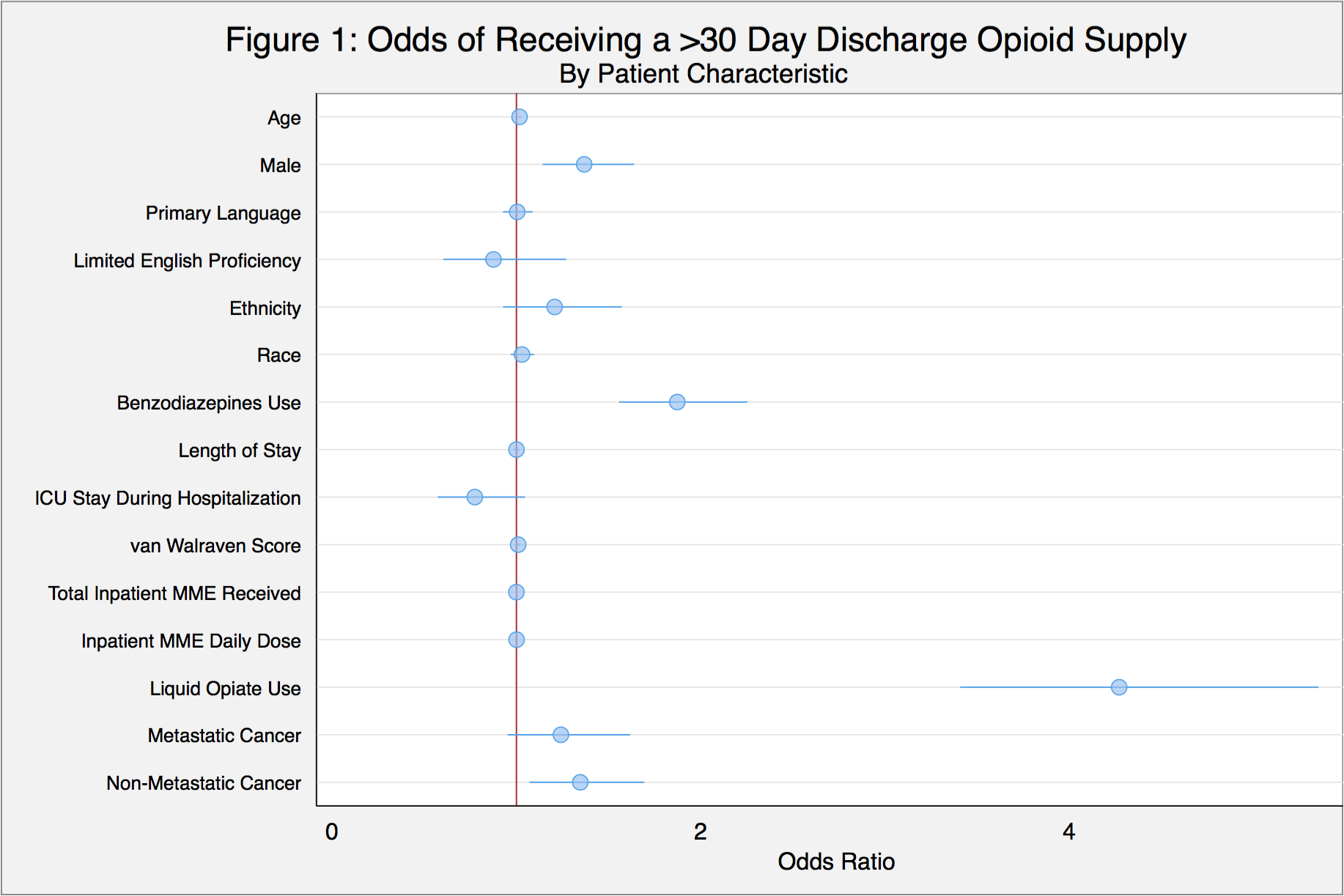Background: Recently enacted policies in multiple states have placed restrictions on opioid prescription days given the risk of development of chronic opioid therapy with prolonged opioid prescriptions. However, there are still patients who receive an excessive number of opioid prescription days after discharge from the hospital. We studied this population retrospectively to understand which patient-level risk factors contribute most to being an outlier of excess opioid prescribing on discharge from a hospital medicine service.
Methods: We used the electronic health record to identify all patients hospitalized on the acute care medical service at a 600-bed tertiary care hospital from years 2012-2018. Patients were included if they received an opioid prescription both while hospitalized and on discharge and data were obtained on patient demographics, medication administration, and diagnosis codes. All opiate prescriptions were standardized to morphine milligram equivalents (MMEs). Days of opioids prescribed on discharge was calculated by the discharge prescription signature and number of pills. Patients were excluded if ICD9 or 10 codes for cancer-related pain or sickle cell disease were documented, or who were on hospice or followed by the palliative care service. Patients were categorized as receiving <=14 days of opioids, 14 to 30 days of opioids, or >30 days of opioids. We then performed a multivariable logistic regression to assess for factors associated with longer opiate prescriptions.
Results: We identified 9,275 medical inpatients prescribed opioids both during the hospitalization and on discharge who were eligible for the analysis. By the discharge prescription signature, 6,001 (64.7%) patients were prescribed less than 14 days, 2,688 (29.0%) received 14-30 days, and 586 (6.3%) received >30 days. Factors associated with receiving a >30 day supply include: being discharged with liquid opioids (OR 4.3 [3.4-5.4]), being on benzodiazepines prior to admission (OR 1.9 [1.6-2.6]), being male (OR 1.4 [1.1-1.6]), and having non-metastatic cancer (OR 1.3 [1.1-1.7]) (Figure 1). The maximum number of days prescribed was 1,875 days.
Conclusions: Patients prescribed liquid formulations of opioids were substantially more likely to have a prolonged duration of opiates supplied at discharge.

